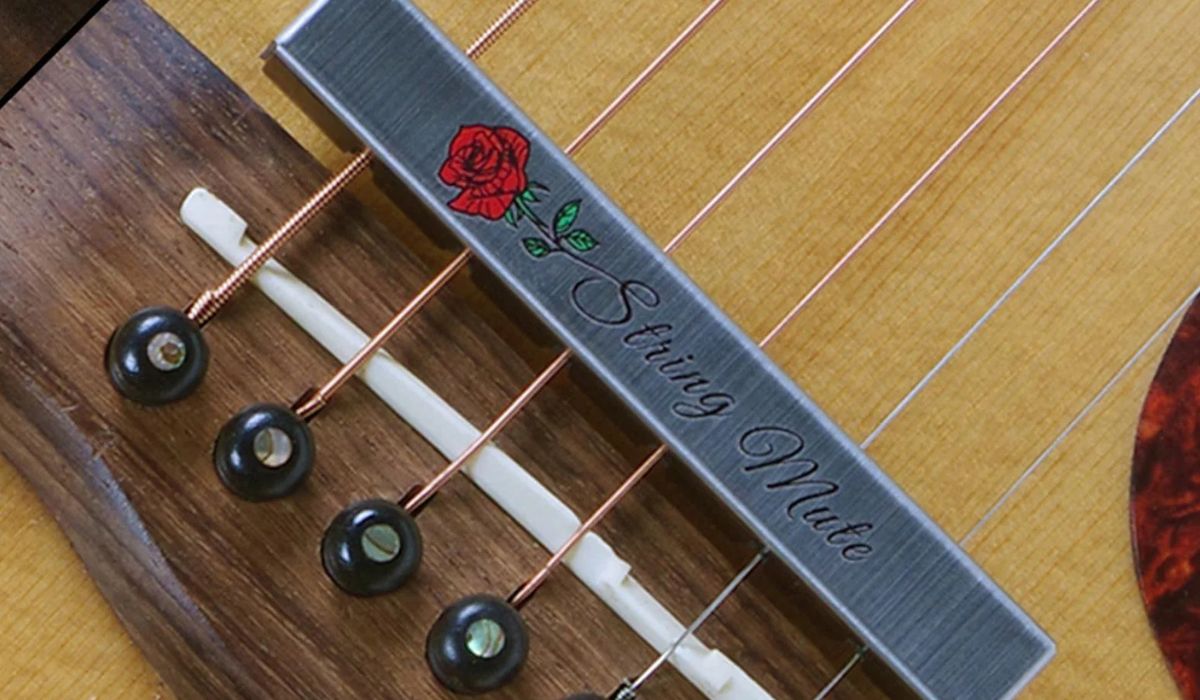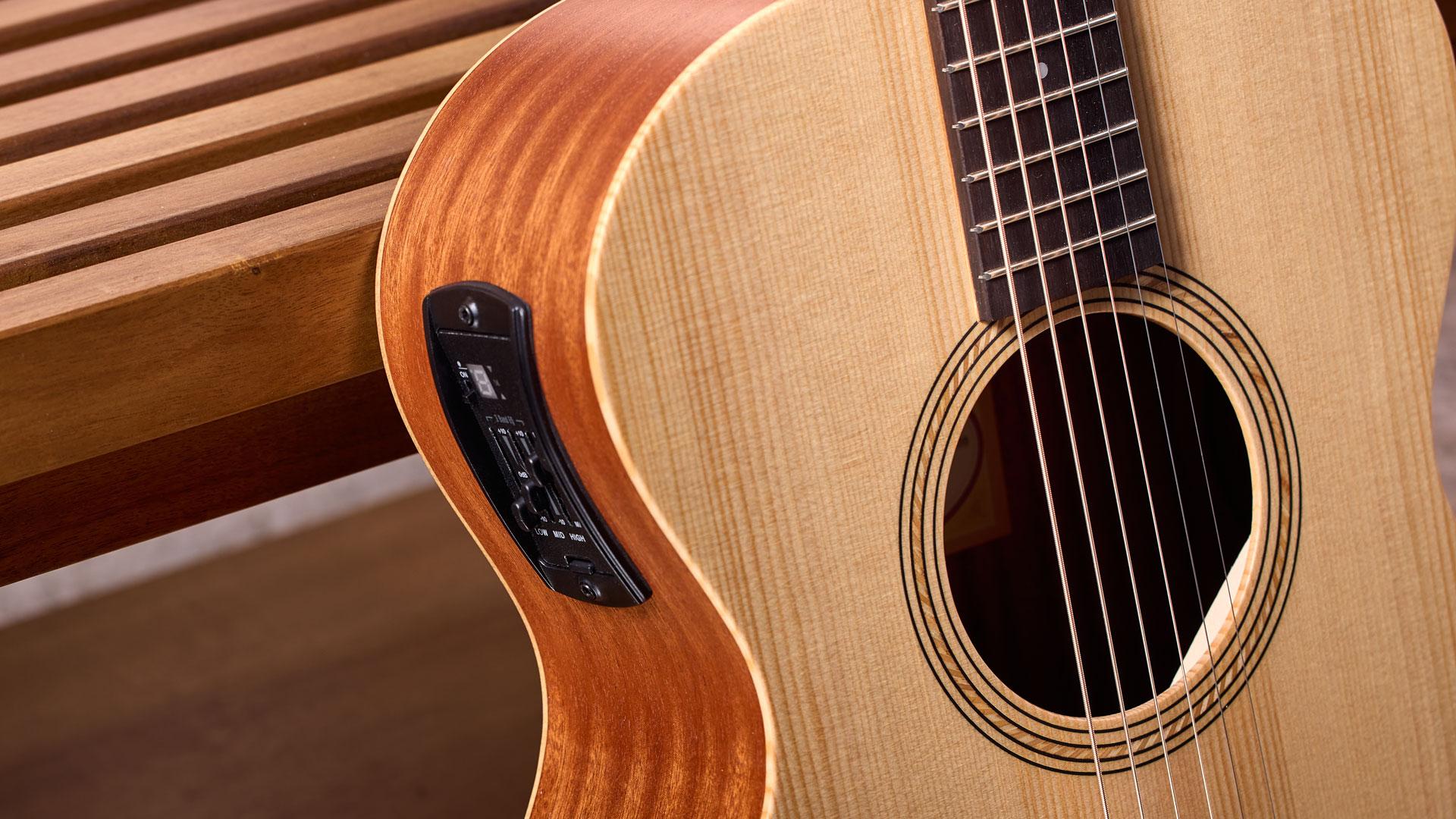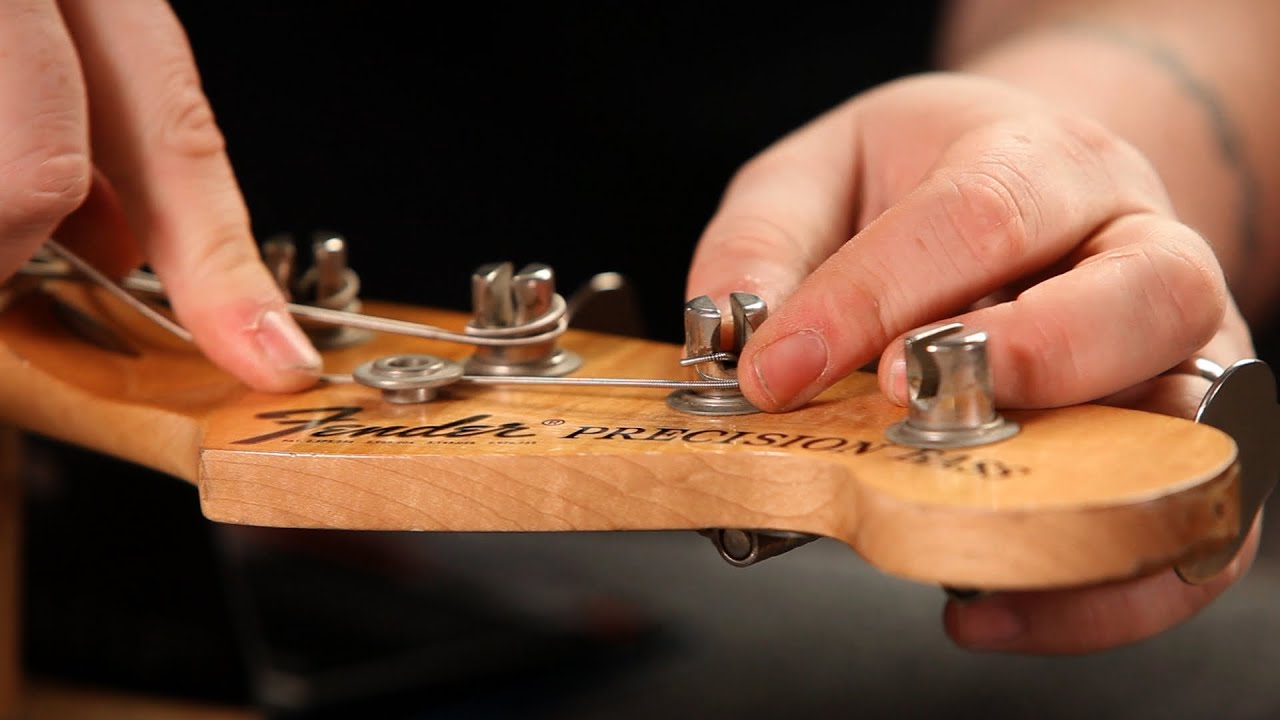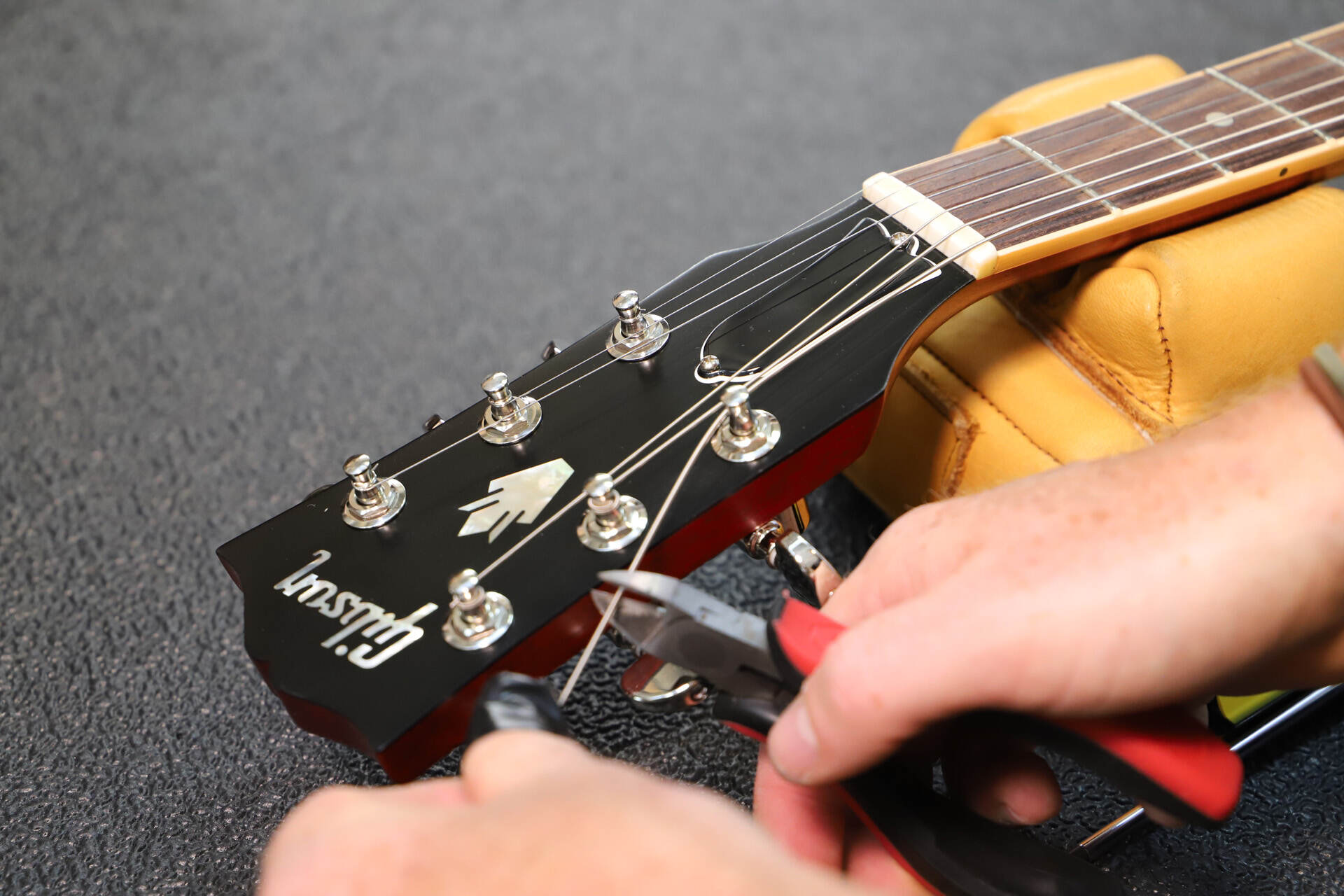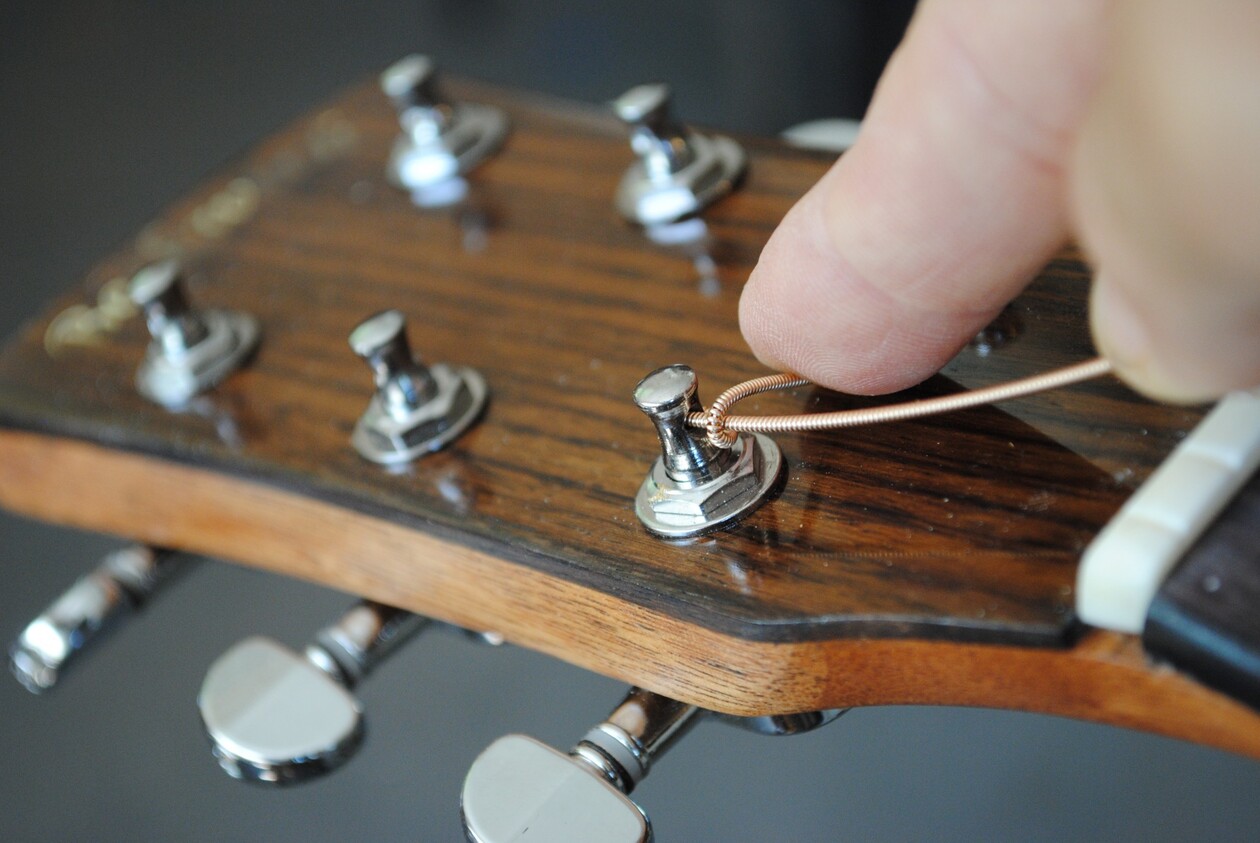Home>Instruments>Guitar>Why Do Guitar Strings Break


Guitar
Why Do Guitar Strings Break
Published: February 16, 2024
Discover the reasons why guitar strings break and how to prevent it. Learn essential tips for guitar maintenance and string longevity. Perfect for guitar enthusiasts.
(Many of the links in this article redirect to a specific reviewed product. Your purchase of these products through affiliate links helps to generate commission for AudioLover.com, at no extra cost. Learn more)
Table of Contents
Introduction
Playing the guitar can be an incredibly rewarding experience, allowing you to express yourself through music and connect with others. However, it can be frustrating when your guitar strings unexpectedly break. Whether you’re a seasoned guitarist or just starting out, broken strings are a common occurrence that can disrupt your practice or performance. Understanding why guitar strings break can help you prevent it from happening and improve your overall playing experience.
In this article, we’ll explore the various factors that can lead to guitar string breakage. From the tension and stress placed on the strings to environmental influences such as temperature and humidity, there are several reasons why this issue may arise. We’ll also delve into the impact of corrosion, wear, and playing style on the durability of guitar strings. By gaining insight into these factors, you’ll be better equipped to maintain your guitar and prolong the lifespan of your strings.
Whether you play acoustic or electric guitar, the principles of string breakage apply across different types of guitars. By the end of this article, you’ll have a comprehensive understanding of why guitar strings break and how you can take proactive measures to minimize the likelihood of experiencing this inconvenience.
Tension and Stress
The tension and stress placed on guitar strings are among the primary factors that can lead to breakage. When you tune your guitar, you subject the strings to a specific amount of tension in order to produce the desired pitch for each string. Over time, this tension can cause the strings to weaken, especially if they are not replaced regularly. Additionally, aggressive strumming or bending of the strings during playing can further exacerbate the stress they endure.
Furthermore, the type of music you play and the frequency of your playing sessions can contribute to the wear and tear experienced by the strings. For instance, heavy metal and rock guitarists often employ techniques that involve intense strumming and string bending, which can accelerate the deterioration of the strings. In contrast, lighter playing styles, such as fingerpicking in folk or classical music, may exert less strain on the strings, but they are still susceptible to tension-related wear over time.
To mitigate the impact of tension and stress on your guitar strings, it’s essential to maintain a balance between proper tuning and regular string replacement. Ensuring that your guitar is set up correctly and using appropriate string gauges for your playing style can also help alleviate excessive tension. By understanding the role of tension and stress in string breakage, you can adopt preventive measures to prolong the lifespan of your strings and enhance your playing experience.
Corrosion and Wear
Corrosion and wear are significant contributors to the degradation of guitar strings. When you play the guitar, the natural oils and acids from your fingers come into contact with the strings, leading to the accumulation of grime and moisture. Over time, this buildup can result in corrosion, particularly in areas where the strings make contact with the frets. The corrosion weakens the structural integrity of the strings, making them more prone to breakage.
Additionally, the constant friction between the strings and the frets, as well as the pressure exerted by the guitar’s bridge and nut, can cause wear on the strings. As the strings age, this wear becomes more pronounced, leading to thinning and eventual breakage. Factors such as the type of material used for the strings and the frequency of playing can influence the rate of corrosion and wear.
To mitigate the impact of corrosion and wear, regular maintenance of your guitar is crucial. Wiping down the strings after each playing session can help remove excess oils and debris, reducing the likelihood of corrosion. Using coated strings, which are designed to resist corrosion and wear, can also prolong the lifespan of your strings. By being mindful of these factors and taking proactive steps to maintain your guitar, you can minimize the effects of corrosion and wear, ultimately reducing the risk of string breakage.
Temperature and Humidity
The environment in which your guitar is stored and played can have a significant impact on the condition of the strings. Fluctuations in temperature and humidity can cause the materials of the strings to expand and contract, leading to increased tension and stress. Extreme temperatures and high humidity levels can accelerate the corrosion of the strings, while low humidity can cause them to become brittle and more susceptible to breakage.
When exposed to high humidity, the strings may absorb moisture, facilitating the corrosion process. On the other hand, low humidity can cause the strings to dry out and lose their flexibility, making them more prone to snapping. Moreover, rapid changes in temperature, such as moving the guitar from a cold environment to a warm one, can put undue stress on the strings, potentially leading to breakage.
To mitigate the effects of temperature and humidity on your guitar strings, it’s essential to store your instrument in a controlled environment. Using a humidifier or dehumidifier, depending on the prevailing conditions, can help maintain an optimal level of humidity. Additionally, storing your guitar in a protective case when not in use can shield it from drastic temperature fluctuations. By being mindful of the environmental factors that influence the condition of your strings, you can minimize the risk of breakage and ensure a longer lifespan for your guitar strings.
Poor Quality Strings
The quality of guitar strings plays a pivotal role in their durability and resistance to breakage. Inferior or substandard strings are more prone to premature wear, corrosion, and breakage compared to high-quality, well-manufactured strings. Poor quality strings often exhibit inconsistencies in their construction, such as uneven winding or inferior materials, which can compromise their structural integrity.
Furthermore, low-quality strings may lack the protective coatings or treatments that shield them from environmental factors and the natural oils present on the player’s fingers. As a result, these strings are more susceptible to corrosion and wear, leading to a shorter lifespan and an increased likelihood of breakage during playing. Additionally, the lack of quality control in the manufacturing process can result in variations in string thickness and tension, further contributing to their propensity to break.
Investing in high-quality strings from reputable manufacturers can significantly reduce the risk of breakage and enhance the overall tonal quality and playability of your guitar. Well-crafted strings are designed to withstand the rigors of regular playing, resist corrosion, and maintain their structural integrity over an extended period. By prioritizing the use of premium strings, you can enjoy a more reliable and consistent playing experience while minimizing the inconvenience of unexpected string breakage.
Playing Style
Individual playing styles and techniques exert varying levels of stress and wear on guitar strings, influencing their susceptibility to breakage. The manner in which a guitarist approaches strumming, picking, bending, and fretting can significantly impact the longevity of the strings. For instance, aggressive strumming and heavy use of string bending techniques, common in genres such as rock, blues, and metal, can subject the strings to heightened tension and friction, accelerating their wear and increasing the likelihood of breakage.
Conversely, lighter playing styles, such as fingerpicking or strumming with less force, place reduced stress on the strings, prolonging their lifespan. However, even gentler playing styles are not immune to the gradual effects of wear and tension. The frequency of playing and the intensity of the guitarist’s performance also contribute to the overall wear experienced by the strings.
Moreover, the choice of guitar and string gauge can influence how a particular playing style affects the strings. For example, heavier gauge strings are generally more resilient to aggressive playing techniques, while lighter gauge strings may be more suitable for nuanced fingerpicking styles. Understanding how your playing style interacts with the properties of different string gauges and materials can help you select strings that align with your preferences and playing approach, ultimately reducing the risk of breakage.
By recognizing the impact of playing style on string durability, guitarists can adapt their technique, explore suitable string options, and implement maintenance practices to prolong the lifespan of their strings. Whether you’re a dynamic strummer or a delicate fingerpicker, tailoring your approach to minimize excessive wear and tension can enhance the longevity of your strings and contribute to a more consistent and enjoyable playing experience.
Conclusion
Understanding the factors that contribute to guitar string breakage is essential for maintaining the integrity of your instrument and ensuring a consistent playing experience. From the tension and stress placed on the strings to the impact of corrosion, wear, and environmental conditions, various elements can influence the durability of guitar strings. By being mindful of these factors and implementing proactive measures, guitarists can minimize the risk of unexpected string breakage and prolong the lifespan of their strings.
Regular maintenance, including wiping down the strings, proper storage, and using high-quality strings, can significantly reduce the likelihood of breakage. Additionally, selecting string gauges and materials that align with your playing style and preferences can contribute to a more durable and reliable setup. Being attuned to the environmental factors that affect the condition of the strings, such as temperature and humidity, can further enhance their longevity.
Moreover, adapting your playing technique to reduce excessive stress and wear on the strings can contribute to their sustained durability. Whether you’re a seasoned guitarist or a beginner, incorporating these strategies into your guitar care routine can lead to a more enjoyable and uninterrupted playing experience.
By taking a holistic approach to string maintenance and understanding the interplay of various factors, guitarists can mitigate the inconvenience of string breakage and focus on honing their musical craft. Ultimately, the knowledge gained from this exploration empowers guitarists to nurture their instruments and optimize their playing experience, fostering a deeper connection with the music they create.

